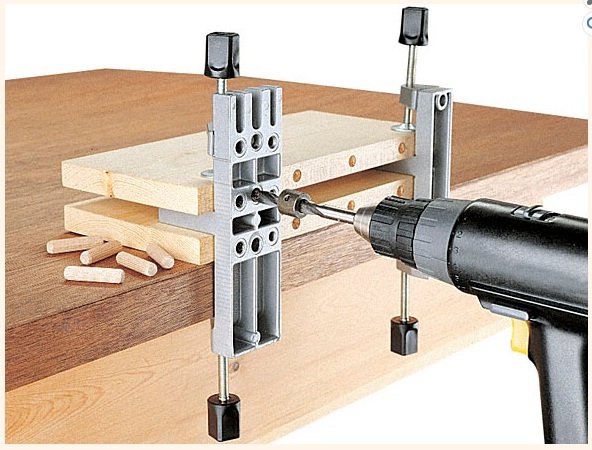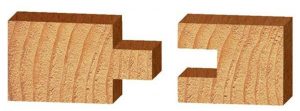Art of Joinery: Beginners Guide to Traditional Joinery

Through the progression of time, woodworkers have since moved on from traditional practices which were heavily dependant on individual skill and craftsmanship. Technology has driven the focus more on productivity and less towards craftsmanship and the art of woodworking.
For carpenters and cabinet makers alike, joinery has always been one of the best ways to display one’s skills and individual style. Traditional, hand-cut, wood-on-wood joinery has been considered over the years as the most reliable and long-lasting method of joining wood. This is mainly because wood fibers are more likely to eventually “join” and become one over time, whereas with metal fasteners the wood will eventually shift/expand away from the metal fastener thus weakening the joint over time.
Today, we discuss some of the most popular methods of traditional western joinery and the tools required to accomplish much of these marvels.
Butt Joints

The simplest and most rudimentary of these joints. This form of joinery simply involves gluing two pieces together with their ends against one another. The most important factor to consider when it comes to this form of joinery is ensuring that the piece is planed well enough to help secure the strength of the glued joint.
Dowel Joint

This method of joinery in one of the oldest and most simple to execute. Dowel Joints entail the user drilling a hole into the piece of wood and then drilling the exact sized hole into the mating piece of wood. These pieces are then joined together by inserting a similar sized wooden pin (the dowel) in between the pieces of wood. These joints are further strengthened by the use of fluted dowels, dowels with grooves on them, and wood glue. The use of Dowel Jigs has since expanded the applications of this joinery method.
Mortise and Tenon

As one of the most tried and tested methods of joinery, the Mortise and Tenon is know for its formidable strength and reliability. These joints are formed by drilling a square/rectangular hole (the mortise) and cutting the end of a piece to match the dimensions of the aforementioned mortise to fit inside the mortise – this piece is then known as the tenon. This tenon is typically 30% of the thickness of the wood pieces. Applying wood glue to these joints can make them last a lifetime.
Tongue & Groove

Very similar to the mortise & tenon in many ways, this is another tried and tested method of joinery. Commonly used in flooring, these joints are made by cutting a groove/slot along the length of a wood piece and cutting a matching tenon along the length of the mating piece to perfectly fit the groove. These tongue and groove joints are typically made using a reliable router bit set and plunge router.
Rabbet Joint
To create a rabbet joint, one would need to cut the end of a piece to make a “step” which when matched on another piece of wood can be glued together to create a joint. These wood joints are typically found in drawers and glass frames.
Finger Joint

Made fairly easily with the use of a specialized jig and a router/table saw, these joints entail a series of straight pins on the ends of a piece and matching pins of the other piece interlocking one another with wood glue for added strength. The joint derives its name from the action of interlocking one’s fingers together.
Dovetail Joint

One of the most beloved joints, because of its beauty and formidable strength, a perfect dovetail joint can very well be the mark of a well-seasoned craftsman. This joint involves having pins and tails which interlock one another similar to a Finger Joint, but stronger. The added strength of these joints is caused by the almost trapezoid shape of these pins and tails which make them very difficult to separate and sometimes even impossible to separate once the glue has been applied.
Dado Joint

These joints entail a groove/slot being cut along a section of a wood piece perpendicular to the wood grain. This cut can either be achieved by the use of a dado-set on a table saw or a reliable router table and a straight router bit. The groove is made to match the thickness of the mating piece for the mating piece to fit perfectly inside the groove.

Comments
Add comment